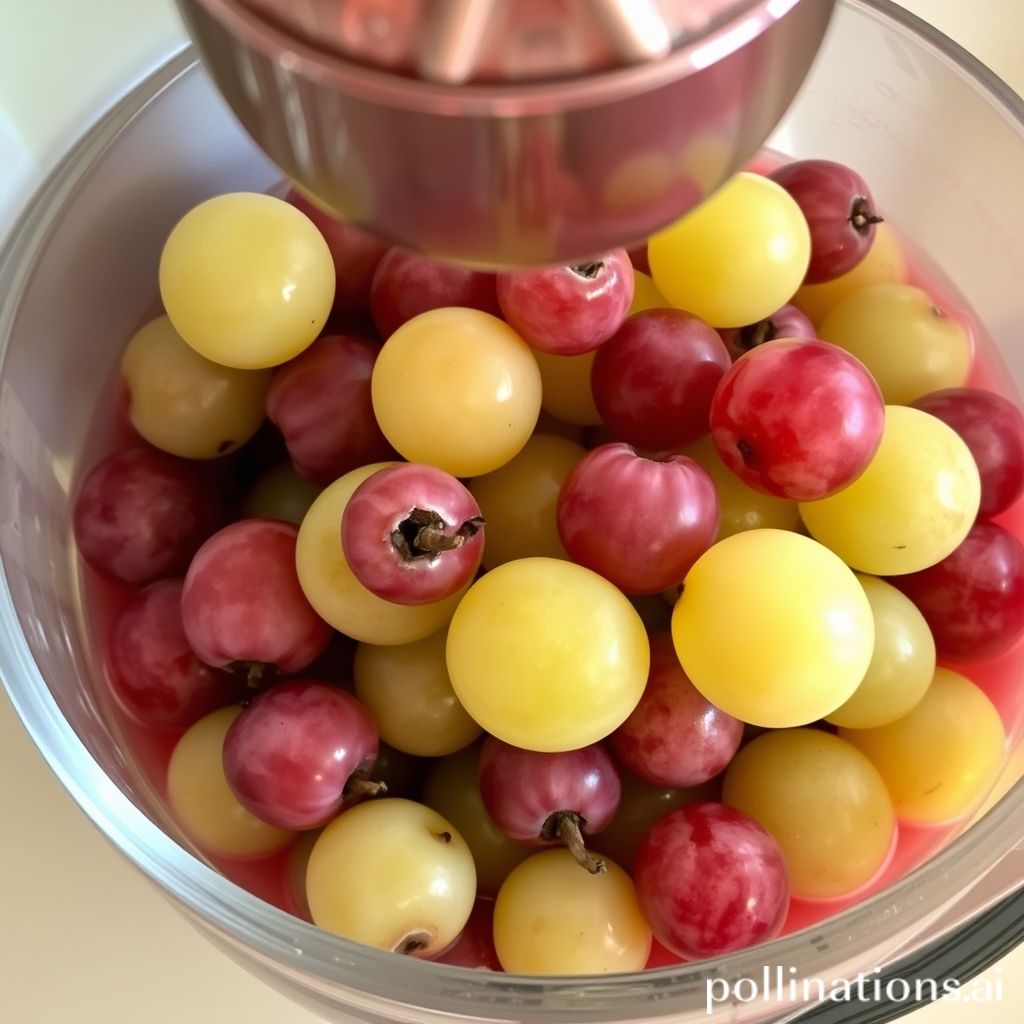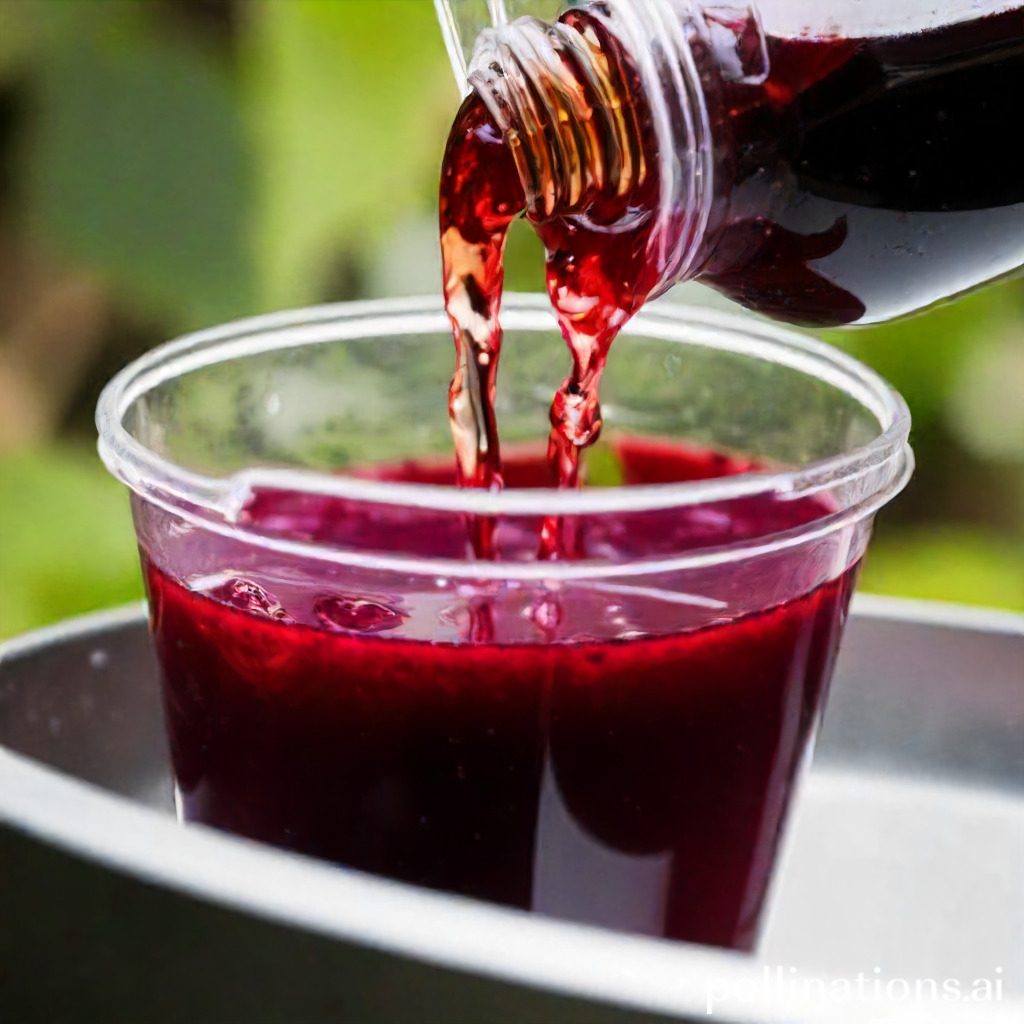How Do You Make Grape Juice?
Grapes, a juicy and refreshing fruit, offer a delightful taste and numerous health benefits. The benefits of grape juice include promoting heart health, boosting immunity, and improving digestion.
Many people may overlook grape juice in the grocery store or avoid it because they are unsure how to make it. That being said, there is no need to be intimidated by this fruity beverage just because it requires a bit of preparation. Grape juice is not only delicious but also packed with essential nutrients. It contains antioxidants, vitamins, and minerals that can nourish your body. Whether you choose to make it from fresh grapes or opt for store-bought options, grape juice is a fantastic way to enjoy the natural sweetness and goodness of grapes.

Choosing the Perfect Grapes for Your Juice
As for making grape juice, selecting the right grapes is crucial for achieving a delicious and refreshing taste. Exploring various grape varieties is the first step in this process. There are different types of grapes, including red, green, and purple varieties, each with its own unique flavor profile.
Table of Contents
1. Exploring Different Grape Varieties
Some popular grape varieties for juice making include Concord, Catawba, and Niagara. Concord grapes are renowned for their distinctively sweet and tart flavor, making them a popular choice for grape juice. Catawba grapes, Conversely, offer a milder and slightly sweeter taste. Niagara grapes have a more delicate flavor, with hints of floral notes.
2. Selecting Ripe and Fresh Grapes
When selecting grapes for juicing, it’s important to choose ripe and fresh ones. Look for grapes that are plump, firm, and free from wrinkles. The color of the grapes should be vibrant, indicating their freshness. Avoid grapes that are mushy or show any signs of mold or decay.
3. Organic and Sustainable Grape Options
For those who prioritize organic and sustainable options, there are grape varieties available that are grown using organic farming methods. These grapes are free from synthetic pesticides and fertilizers, ensuring a healthier choice for both you and the environment. Look for grapes that are certified organic or grown using sustainable farming practices.
Expert Tips: Choose the perfect grapes for your juice by exploring different varieties, selecting ripe and fresh grapes, and considering organic and sustainable options. #JuiceMakingTipsPreparing the Grapes for Juice Extraction
In the realm of making grape juice, the first step is to properly prepare the grapes for juice extraction. This important process ensures that the resulting juice is of the highest quality and flavor. Follow these steps to achieve the best results:
1. Washing and Sorting the Grapes
Start by washing the grapes thoroughly under cold running water. This removes any dirt, dust, or residue that may be present on the grapes. After washing, sort the grapes to remove any damaged or unripe ones. This will ensure that only the best grapes are used for juice extraction.
2. Removing Stems and Debris
Next, remove the stems from the grapes. Stems can add a bitter taste to the juice, so it’s important to remove them. Additionally, inspect the grapes for any debris, such as leaves or insects, and remove them as well.
3. Crushing or Blending the Grapes
Once the grapes are washed, sorted, and free from stems and debris, it’s time to extract the juice. There are two common methods for this: crushing and blending. Crushing the grapes involves using a grape crusher or simply mashing them with a clean, sanitized utensil. Blending, Nevertheless, requires a blender or food processor to puree the grapes.
| Step | Description |
|---|---|
| 1 | Washing and Sorting the Grapes: Thoroughly wash the grapes under cold running water. Sort the grapes to remove any damaged or unripe ones. |
| 2 | Removing Stems and Debris: Remove the stems from the grapes and inspect them for any debris, such as leaves or insects. |
| 3 | Crushing or Blending the Grapes: Choose between crushing the grapes with a grape crusher or mashing them, or blending them using a blender or food processor. |
Extracting Juice from the Grapes
1. Using a Juicer for Efficient Extraction
As for making grape juice, using a juicer can be a fast and efficient method for extracting juice. A juicer is specifically designed to separate the juice from fruits, including grapes. The juicer works by separating the juice from the pulp, resulting in a smooth and flavorful grape juice.
2. Manual Methods for Extracting Juice
If you don’t have a juicer, there are manual methods that you can use to extract juice from grapes. One method is to crush the grapes using a potato masher or a wooden spoon. After mashing the grapes, strain the mixture through a fine-mesh sieve or cheesecloth to separate the juice from the pulp.
3. Pressing the Grapes for Maximum Yield
Another method for extracting juice from grapes is by pressing them. This method is often used for larger quantities of grapes or when a higher yield of juice is desired. To press the grapes, you can use a grape press or even a clean kitchen towel. Simply place the grapes in the press or wrap them in the towel, and apply pressure to release the juice.
By using these methods, you can easily make grape juice at home. Whether you prefer the convenience of a juicer or the traditional manual methods, extracting juice from grapes allows you to enjoy the natural sweetness and refreshing taste of grape juice.

Enhancing the Flavor of Homemade Grape Juice
1. Adding Sweeteners or Natural Sugars
One way to improve the taste of homemade grape juice is by adding sweeteners or natural sugars. You can mix in a small amount of honey, agave syrup, or maple syrup to enhance the natural sweetness of the grapes and give the juice a more well-rounded flavor.
2. Incorporating Other Fruits or Flavors
Another method to enhance the flavor of homemade grape juice is By fusing other fruits or flavors. You can add a splash of citrus juice, like lemon or lime, to give the grape juice a refreshing twist. Additionally, you can experiment with adding strawberries or blueberries to create unique flavor combinations.
3. Experimenting with Different Combinations
To truly enhance the flavor of homemade grape juice, don’t be afraid to experiment with different combinations. Try adding herbs like mint or basil for a hint of freshness, or spices like cinnamon or ginger for a warm and comforting flavor. The possibilities are endless, so have fun and let your taste buds guide you!
| Information |
|---|
| Enhancing the Flavor of Homemade Grape Juice |
Note: When experimenting with different flavors, it’s important to taste test along the way to ensure the desired flavor profile is achieved. Remember to start with small amounts and gradually add more if needed.
- Adding Sweeteners or Natural Sugars
- Incorporating Other Fruits or Flavors
- Experimenting with Different Combinations
Storing and Preserving Grape Juice
Grape juice is a delicious and healthy drink that can be enjoyed year-round. To keep it fresh and flavorful, it’s important to store and preserve it correctly. This article will guide you through the steps to effectively store and preserve grape juice.
1. Choosing the Right Containers for Storage
The first step in preserving grape juice is selecting the right containers. It’s best to use glass jars or bottles with airtight lids. Glass containers are ideal because they don’t interact with the juice and maintain its quality. Before using them, make sure the containers are clean and sterilized to avoid any contamination.
2. Proper Refrigeration and Freezing Techniques
Refrigeration is the most common method for storing grape juice short-term. Store the juice at a temperature below 40°F (4°C) to prevent spoilage. It’s recommended to consume refrigerated grape juice within a week to keep it fresh.
For long-term storage, freezing is the best option. Fill the glass containers with grape juice, leaving some space at the top for expansion. Seal the containers tightly and place them in the freezer. Frozen grape juice can be stored for up to a year without significant loss of quality.
3. Tips for Extending the Shelf Life
To extend the shelf life of grape juice, consider the following tips:
- Adding Citric Acid: Adding a small amount of citric acid to the juice can help preserve its color and flavor.
- Using Sugar Syrup: If you prefer a sweeter taste, you can make a sugar syrup by dissolving sugar in water and adding it to the juice before storage.
- Proper Sealing: Make sure the containers are tightly sealed to prevent air exposure, which can cause oxidation and spoilage.
Conclusion
Making grape juice is a simple and refreshing process that can be enjoyed by all. By embracing the steps in this article, anyone can create their own delicious grape juice at home.
Whether you prefer a sweet or tart flavor, there are various methods to suit your taste. From selecting the right grapes to extracting the juice and adding optional ingredients, the possibilities are endless. So why not give it a try and experience the joy of homemade grape juice? Cheers to a healthy and flavorful beverage!
Frequently Asked Questions about Making Grape Juice
FAQ 1: Can I use any type of grapes for making juice?
Yes, you can use various types of grapes to make juice. Popular choices include Concord, Muscadine, and Thompson seedless grapes. Different grape varieties will result in slightly different flavors and colors of juice, so feel free to experiment and find your favorite.
FAQ 2: How long does homemade grape juice last?
When stored properly in a sealed container in the refrigerator, homemade grape juice can typically last for about 7-10 days. It is important to keep it refrigerated to maintain its freshness and prevent spoilage.
FAQ 3: Can I make grape juice without a juicer?
Yes, you can make grape juice without a juicer. One popular method is to mash the grapes using a potato masher or a fork, then strain the juice through a fine-mesh sieve or cheesecloth to remove any solids. Another option is to blend the grapes and strain the mixture using a nut milk bag or a clean kitchen towel.
FAQ 4: What are some creative ways to use grape juice?
Grape juice can be used in a variety of creative ways. It can be used as a base for smoothies, mixed into cocktails or mocktails, used as a marinade for meats, drizzled over desserts, or even frozen into popsicles. The possibilities are endless, so let your imagination run wild!
FAQ 5: Can I freeze grape juice for later use?
Yes, you can freeze grape juice for later use. Simply transfer the juice into a freezer-safe container, leaving some room for expansion, and store it in the freezer. When you’re ready to use it, thaw it in the refrigerator overnight or defrost it in the microwave. Remember to give it a good shake or stir before consuming.
By complying with these FAQs, you can easily make delicious grape juice at home and explore the various ways to enjoy it. Enjoy the refreshing taste of homemade grape juice whenever you please!
Read Similar Post:
1. Freshly Squeezed Green Grape Juice Recipe: Refreshing and Delicious!
2. Juice it up! A beginner’s guide to making grape juice with a juicer

